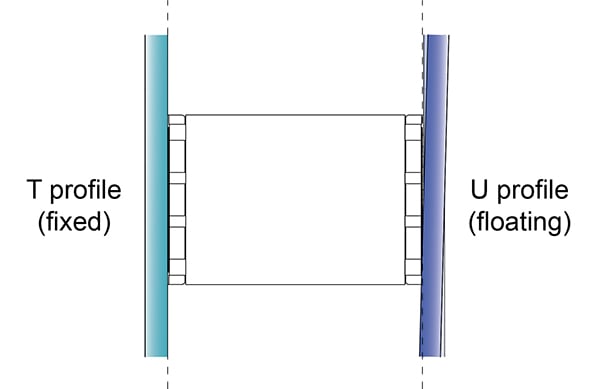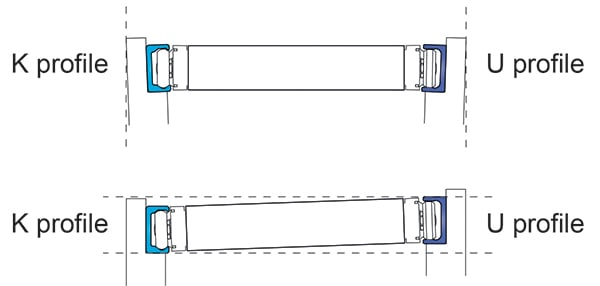
Completely avoiding deviations in parallelism in linear motion applications is almost impossible. However, there are ways to handle them so that you can facilitate the installation of the rail guide and, in the long run, reduce the wear on the rails.
Dealing with deviations in parallelism
Linear guides with recirculating balls have high precision and the capacity to handle heavy loads in all directions with high accuracy and motion control. However, in some situations and applications, these strengths can also create limitations. In order to achieve these results, the rails must be mounted parallel and level with each other. Moreover, with great accuracy it comes down to hundredths of a millimeter. When the mounting surfaces are not completely precise or rigid, mounting can be both time-consuming and costly. Parallelism problems also cause wear and tear, which in turn drastically reduces the lifespan.
Which direction rules?
The first step is to determine which lateral direction is requiring the highest accuracy. Is it most important that the linear guide is free or have a low clearance horizontally or vertically? The answer to those questions determines which rail or rails should be fixed or floating. By configuring the linear guide system with a suitable combination of fixed, angle-compensating or floating rails, you get an effective solution, both for handling of parallel deviations and angular errors in the design and reducing assembly time. Another important advantage is that the mounting surfaces sometimes do not need to be machined.
Combine rails
By using one fixed and one floating rail, the problem of aligning two mounting surfaces can be solved. It compensates for axial movement of the slider for parallelism deviations. Similarly, a combination of two floating rails can handle both parallel deviations and angular errors. However, the distance between the rails can pose a problem. The longer the distance, the greater the impact of any tilt or warp in the floor, making it more difficult to compensate with this type of solution.




